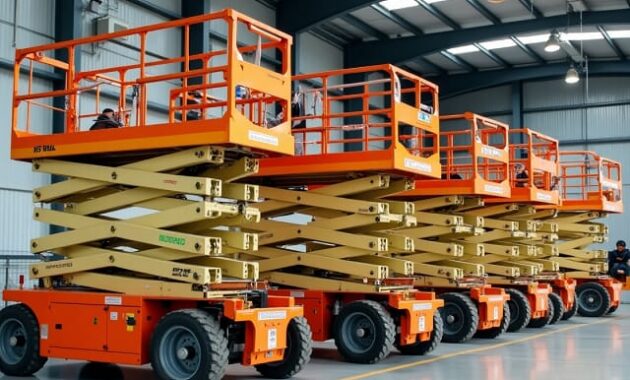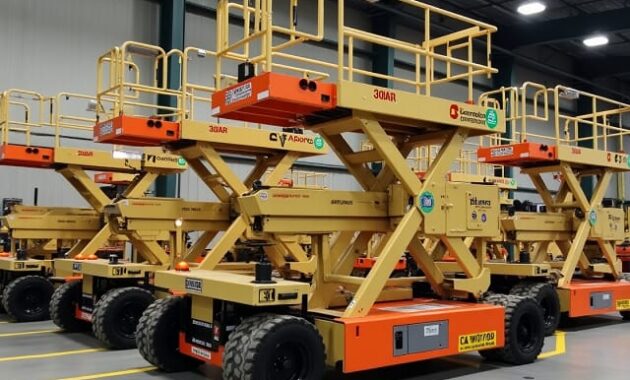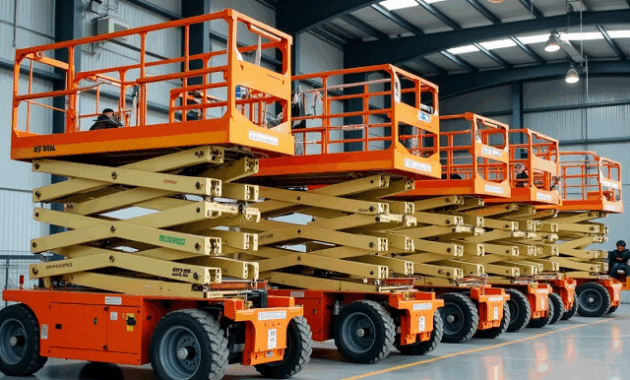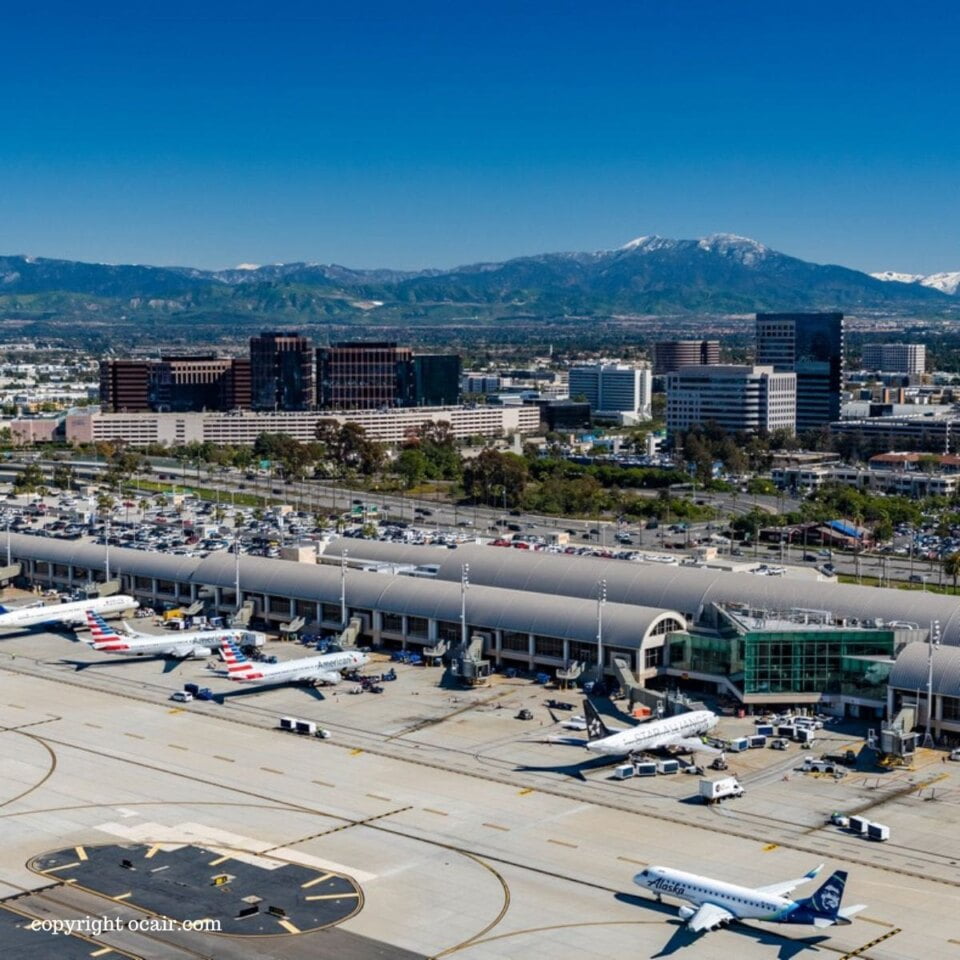Airport Scissor Lift Trucks for Sale: Elevating Efficiency and Safety in Aviation Operations
In the dynamic and demanding environment of an airport, efficiency, safety, and precision are paramount. Every piece of ground support equipment (GSE) plays a crucial role in maintaining seamless operations, from aircraft turnaround to terminal maintenance. Among the most versatile and indispensable tools in this arsenal are airport scissor lift trucks. These robust, mobile elevated work platforms are designed to provide stable and secure access to elevated areas, making them fundamental for a wide array of tasks across the airport landscape.
This comprehensive guide delves into everything you need to know when considering airport scissor lift trucks for sale. Whether you’re an airline, a ground handling company, an airport authority, or an independent maintenance provider, understanding the nuances of these vital machines is key to making an informed investment that enhances productivity and safety.
Read Also:
Toyota Tundra Trim Levels Compared
The Indispensable Role of Scissor Lifts in Airport Operations
Airport scissor lift trucks are not just generic construction equipment; they are specialized machines engineered to meet the unique demands of an aviation setting. Their primary function is to safely lift personnel, tools, and materials to various heights, providing a stable platform for work that would otherwise be dangerous or impossible.
Their applications within an airport are incredibly diverse:
- Aircraft Maintenance: From routine inspections to complex repairs on engine nacelles, wing surfaces, fuselage sections, and tail assemblies, scissor lifts provide the stable access required for technicians to work efficiently and safely at height. This includes tasks like de-icing, anti-corrosion treatments, and component replacement.
- Cargo and Baggage Handling: While larger cargo loaders handle the bulk, smaller, specialized scissor lifts can be used for accessing specific cargo compartments on smaller aircraft or for handling oversized, delicate, or unique cargo items.
- Catering and Cabin Services: Some specialized scissor lifts are adapted to facilitate the loading and unloading of catering supplies, cleaning equipment, and cabin amenities, ensuring quick turnaround times.
- Terminal and Hangar Maintenance: Beyond the aircraft, these lifts are invaluable for maintaining airport infrastructure, including high ceilings, lighting fixtures, signage, ventilation systems, and fire suppression systems within terminals, hangars, and baggage facilities.
- Construction and Renovation: During airport expansion or renovation projects, scissor lifts are essential for installing new structures, electrical systems, and architectural elements at height.
The benefits of utilizing these specialized lifts are profound: enhanced safety by reducing the need for ladders or scaffolding, increased operational efficiency through quick positioning and stable platforms, and remarkable versatility that allows a single machine to perform multiple tasks.
Key Features and Specifications to Look For
When evaluating airport scissor lift trucks for sale, understanding the critical specifications and features is paramount to matching the equipment to your specific operational needs.
- Lift Height: This is arguably the most crucial specification. Airport tasks can range from accessing the underside of a regional jet (requiring lower heights) to reaching the tail section of a wide-body aircraft (demanding significant vertical reach, often 40-60 feet or more).
- Platform Capacity: This indicates the maximum weight the platform can safely hold, including personnel, tools, and materials. Capacities typically range from 500 lbs to over 1,500 lbs. Ensure it meets the demands of your heaviest tasks.
- Platform Size and Extension: The dimensions of the platform dictate the working area available. Many lifts come with roll-out deck extensions, providing additional reach over obstacles or a larger workspace without repositioning the entire machine.
- Power Source:
- Electric (Battery-Powered): Ideal for indoor operations (hangars, terminals) due to zero emissions, quiet operation, and suitability for flat, stable surfaces (slab lifts). They require charging infrastructure.
- Diesel (Combustion Engine): Preferred for outdoor, rough-terrain applications (tarmac, construction sites) due to higher power, better gradeability, and extended operating times. They produce emissions and are louder.
- Hybrid: Offers the flexibility of both electric and diesel, switching modes as needed, providing a balance of power and environmental considerations.
- Maneuverability and Drive: Consider the turning radius, drive speed, and whether it’s two-wheel or four-wheel drive. For rough terrain, four-wheel drive and oscillating axles provide better traction and stability.
- Safety Features: Non-negotiable for airport environments. Look for:
- Automatic pothole protection.
- Tilt sensors with alarms and automatic shutdown.
- Emergency stop buttons (both on platform and ground controls).
- Guardrails with self-closing gates.
- Flashing beacons and motion alarms.
- Aircraft proximity sensors (for specialized models).
- Non-marking tires (essential for hangars and sensitive surfaces).
- Robust Construction and Durability: Airport environments are demanding. Look for heavy-duty components, weather-resistant coatings, and designs built to withstand continuous use and harsh conditions.
Navigating the Market: Where to Find Airport Scissor Lift Trucks for Sale
The market for airport scissor lift trucks offers various avenues for acquisition, each with its own advantages and considerations.
- Authorized Dealers (New Equipment): Purchasing from an authorized dealer provides access to the latest models, manufacturer warranties, certified service, and genuine parts. This option often involves higher upfront costs but offers peace of mind regarding reliability and long-term support.
- Used Equipment Dealers: For budget-conscious buyers, used equipment dealers offer a cost-effective alternative. They typically have a wide selection of brands and models. Thorough inspection and understanding the equipment’s history are crucial here. Reputable dealers often provide reconditioned units with limited warranties.
- Online Marketplaces and Auctions: Websites specializing in heavy equipment, such as Ritchie Bros. Auctioneers, IronPlanet, or even general classifieds like eBay, can be sources for both new and used lifts. Auctions can yield significant savings but often involve “as-is” purchases, requiring diligent pre-bid inspections.
- Direct from Airlines or Airport Authorities: Occasionally, large operators upgrade their fleets and sell off their used equipment directly. This can be a good source for well-maintained, airport-specific machines, but opportunities may be less frequent.
- Rental Companies Selling Off Fleet: Rental companies often cycle out their older equipment. These units are typically well-maintained but have high operating hours.
Important Considerations Before Purchase
Making the right purchase requires careful planning beyond just the initial price tag.
- Budget and Total Cost of Ownership (TCO): Beyond the purchase price, factor in maintenance costs, fuel/electricity, parts, insurance, and potential depreciation. A cheaper lift upfront might be more expensive to operate and maintain in the long run.
- Specific Operational Needs: Clearly define the primary tasks, required lift height, platform capacity, working environment (indoor/outdoor, paved/rough), and frequency of use. This will narrow down your options significantly.
- Regulatory Compliance and Safety Standards: Ensure the lift complies with all relevant aviation regulations (e.g., FAA guidelines for GSE), local airport authority rules, and international safety standards (e.g., ANSI A92.20 in North America, EN280 in Europe).
- Maintenance and Service Support: Evaluate the availability of parts and qualified technicians for the brand and model you choose. Downtime in an airport environment is costly, so quick and reliable service is critical.
- Warranty and After-Sales Support: New machines come with valuable manufacturer warranties. For used equipment, inquire about any guarantees or post-sale support from the dealer.
- Pre-Purchase Inspection (for Used Lifts): This is non-negotiable. A qualified mechanic should thoroughly inspect the engine/motor, hydraulic system, electrical components, structural integrity (rust, welds), tires, and safety features. Request maintenance records.
- Operator Training: Regardless of the machine’s condition, proper operator training is essential for safe and efficient use. Factor this into your acquisition plan.
Types of Airport Scissor Lift Trucks
While the term “scissor lift” is broad, several distinct types are relevant to airport operations:
- Slab Scissor Lifts (Electric): Designed for smooth, flat surfaces like hangar floors, terminal concourses, and paved areas. They are compact, quiet, zero-emission, and typically offer lower lift heights (up to 40 ft) with good maneuverability.
- Rough Terrain Scissor Lifts (Diesel/Hybrid): Built for outdoor, uneven surfaces such as unpaved sections of the tarmac, construction sites, or areas with gravel. They feature robust tires, higher ground clearance, often 4WD, and more powerful engines, capable of reaching significant heights (up to 60 ft or more).
- Engine-Powered Scissor Lifts: Primarily diesel, these are heavy-duty machines suitable for extensive outdoor work.
- Self-Propelled Scissor Lifts: The most common type for airport use, allowing the operator to drive the machine from the platform, greatly enhancing efficiency.
- Push-Around Scissor Lifts: Manually positioned, then raised. Less common for primary airport ground support, but it might be used for very specific, static tasks.
- Specialized Airport Scissor Lifts: Some manufacturers offer tailor-made lifts with features like low-profile designs for under-wing access, extra-long platforms for specific aircraft sections, or precise positioning systems.
Tips for a Successful Purchase
- Define Your Needs Clearly: Before you even start looking, list out the maximum required height, platform capacity, intended work environment, and any special features.
- Do Your Research: Compare different brands, models, and suppliers. Read reviews and seek recommendations from other airport operators.
- Get Multiple Quotes: Don’t settle for the first offer. Obtain quotes from several dealers or sellers to ensure competitive pricing.
- Prioritize Safety: Never compromise on safety features. A lift might be cheap, but an accident is infinitely more costly.
- Factor in Long-Term Costs: Look beyond the sticker price. Consider fuel/electricity consumption, maintenance, and potential repair costs.
- Negotiate: Don’t be afraid to negotiate the price, especially for used equipment or when buying multiple units.
- Don’t Rush the Decision: Take your time to evaluate options thoroughly. A well-considered purchase will serve your operations reliably for years.
Airport Scissor Lift Trucks for Sale: Estimated Price Table
Please note that these prices are estimates and can vary significantly based on brand (e.g., JLG, Genie, Skyjack, Haulotte), specific model, features, age, condition (for used), market demand, and location. This table provides a general range for common types relevant to airport operations.
| Category | Type | Lift Height Range (ft) | Platform Capacity (lbs) | Power Source | Condition | Estimated Price Range (USD) | Key Features for Airport Use |
|---|---|---|---|---|---|---|---|
| Indoor/Slab Lifts | Electric Scissor Lift | 19 – 32 | 500 – 800 | Electric | New | $20,000 – $45,000 | Non-marking tires, compact, quiet, zero-emission, ideal for hangars. |
| Electric Scissor Lift | 19 – 32 | 500 – 800 | Electric | Used (Good) | $8,000 – $25,000 | Cost-effective for indoor maintenance, ensuring battery health. | |
| Electric Scissor Lift | 32 – 46 | 700 – 1,000 | Electric | New | $35,000 – $60,000 | Higher reach for terminal ceilings, larger aircraft cabins. | |
| Electric Scissor Lift | 32 – 46 | 700 – 1,000 | Electric | Used (Good) | $15,000 – $35,000 | Check hydraulic leaks and electrical systems. | |
| Outdoor/Rough Terrain | Diesel Rough Terrain Scissor Lift | 26 – 40 | 1,000 – 1,500 | Diesel | New | $50,000 – $80,000 | 4WD, oscillating axle, robust tires, suitable for tarmac & construction. |
| Diesel Rough Terrain Scissor Lift | 26 – 40 | 1,000 – 1,500 | Diesel | Used (Good) | $25,000 – $50,000 | Inspect engine, hydraulics, and structural integrity. | |
| Diesel Rough Terrain Scissor Lift | 40 – 60+ | 1,200 – 2,000 | Diesel | New | $75,000 – $120,000+ | High reach for large aircraft tails, heavy-duty applications. | |
| Diesel Rough Terrain Scissor Lift | 40 – 60+ | 1,200 – 2,000 | Diesel | Used (Good) | $40,000 – $80,000+ | Critical inspection for boom, platform stability. | |
| Specialized | Hybrid/Bi-Energy Scissor Lift | 30 – 50 | 800 – 1,200 | Hybrid | New | $60,000 – $95,000 | Versatility for indoor/outdoor, reduced emissions. |
| Specialized Low-Profile Scissor Lift | 10 – 20 | 500 – 700 | Electric/Diesel | New | $30,000 – $60,000 | Compact design for under-wing access, tight spaces. |
Frequently Asked Questions (FAQ) about Airport Scissor Lift Trucks
Q1: What is the typical lifespan of an airport scissor lift truck?
A1: With proper maintenance and regular servicing, a well-built scissor lift can last 10-15 years or even longer. Operating hours, environment, and adherence to service schedules significantly impact longevity.
Q2: Is it better to buy a new or used airport scissor lift?
A2: It depends on your budget, operational needs, and risk tolerance. New lifts offer warranties, the latest technology, and lower initial maintenance. Used lifts are more cost-effective but require thorough inspection and may incur higher maintenance costs over time.
Q3: Are specialized licenses or certifications required to operate these lifts at an airport?
A3: Yes. Operators must be properly trained and certified according to OSHA (Occupational Safety and Health Administration) or equivalent national safety standards. Airport authorities may also have specific requirements for GSE operators, including background checks and airside driving permits.
Q4: How important is regular maintenance for an airport scissor lift?
A4: Extremely important. Regular preventive maintenance ensures safety, extends the machine’s lifespan, prevents costly breakdowns, and ensures compliance with safety regulations. Daily pre-operation checks are also crucial.
Q5: Can I customize a standard scissor lift for specific airport tasks?
A5: While some modifications might be possible (e.g., custom platform attachments), extensive customization should ideally be done by the manufacturer or an authorized dealer to ensure safety and compliance with engineering standards. For unique airport needs, look for manufacturers who offer specialized aviation-specific models.
Q6: What are the most critical safety features to look for in an airport scissor lift?
A6: Essential features include emergency stop buttons (at both ground and platform controls), automatic pothole protection, tilt sensors with alarms, guardrails with self-closing gates, flashing beacons, and non-marking tires for indoor use. Aircraft proximity sensors are highly recommended for airside operations.
Conclusion
The acquisition of an airport scissor lift truck is a strategic investment that directly impacts the efficiency, safety, and operational capabilities of any aviation-related business. By understanding the diverse roles these machines play, meticulously evaluating their features and specifications, navigating the various market avenues, and considering all critical factors before purchase, you can make a decision that provides long-term value.
Whether you opt for a brand-new model equipped with the latest technology or a thoroughly inspected used unit, prioritizing safety, reliability, and suitability for your specific tasks will ensure that your chosen scissor lift truly elevates your airport operations to new heights. truckpages
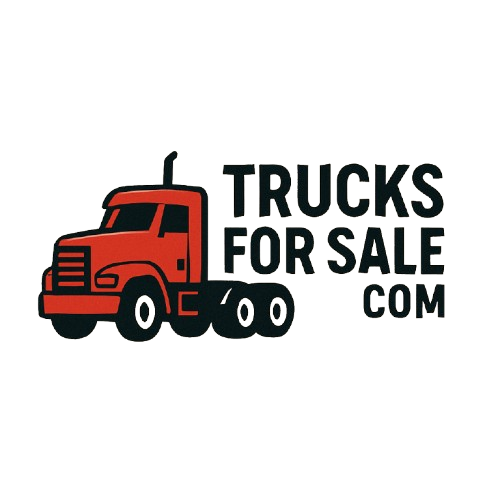 Trucks for Sale Find the best deals on used trucks for sale across the USA. Browse pickups, semi trucks, dump trucks and more – updated daily
Trucks for Sale Find the best deals on used trucks for sale across the USA. Browse pickups, semi trucks, dump trucks and more – updated daily

